The More Things Change - Maxwell's 90th Anniversary
July 1, 2014
Related:
Syracuse University opened its new School of Citizenship and Public Affairs on October 3, 1924, headquartered in Slocum Hall and not yet named for its then-anonymous donor. Beginning in the fall of 2014, the Maxwell School marks its 90th anniversary. We trace some ways the years have altered the School, and the fundamental ways in which they haven’t.
Lesson #1: It’s Always Been About Citizenship
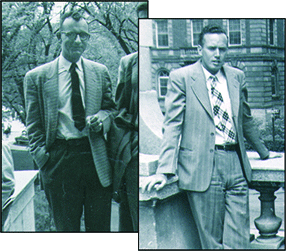
Through all the growth and change over the 90-year history of the Maxwell School, perhaps the most important recurring theme is legible above the entrances.
“George Maxwell founded this school as a school of citizenship,” says Robert McClure, Chapple Family Professor of Citizenship and Democracy Emeritus. “That’s why on the outside of the old building, and even on the new one, it says citizenship. It doesn’t say public administration. It doesn’t say graduate school. It doesn’t say professional programs. It says citizenship. That’s what Maxwell wanted.”
In the wake of World War I, what Boston businessman George Maxwell wanted was to counter what he described as “the general ignorance among the masses of our history, the principles of our government, its aims and safeguards.” By founding a school of citizenship at his alma mater (SU class of 1888), Maxwell hoped to instill what he called “intelligent patriotism” and to cultivate a new generation of civic-minded leaders and teachers of government and citizenship. The first Maxwell School dean, William Mosher, developed a course called Introduction to Responsible Citizenship — “Cit 1” — required for all freshmen in the College of Liberal Arts.
Citizenship Education, Then & Now
Compare these catalog descriptions of Responsible Citizenship (“Cit 1”) and today’s corner-stone MAX Course on domestic issues:
Cit 1 (1937): “Students are made aware of the importance of evaluating pertinent facts, of appreciating the role played by habitual assumptions, both their own and those of others, by propaganda, by traditional institutional
behavior, and the like. Efforts are made to cultivate the scientific approach and tolerance toward viewpoints conflicting with their own, as well as the capacity to deal with these constructively.”
MAX 123 (2014): “This is no course for the faint-hearted, the thin-skinned, or the closed-minded. Nor is it a course where all opinions are equal. Grasp of the facts, cogency of argument, and evidence of moral understanding make some opinions better than
others. . . . We are looking for fact-based reason in service of democratic values.” For decades, Cit 1 was a foundation of the School, with an interdisciplinary, team-taught approach that laid out the fundamentals of democratic governance
and then applied them to contemporary issues. “The idea was to get some sense of both the philosophy of self-government and the responsibilities this placed on citizens,” says Professor Emeritus Ralph Ketcham, who began teaching the
citizenship curriculum in 1951.
In the post–World War II era, Cit 1’s method of promoting citizenship began to seem old-fashioned, Ketcham says. As more specialized disciplines rose in prominence, the notion of requiring all freshmen to take a citizenship course became increasingly controversial. In 1960 the faculty voted to remove Cit 1 as a requirement. On the surface, Maxwell was no longer so readily identifiable as a school of citizenship.
The mission to teach citizenship lived on within the School, however, and moved into new areas. Much of the content of Cit 1 was ultimately absorbed by Public Affairs, with a stronger focus on empirical analysis of social and political issues. In the 1970s, Public Affairs director William Coplin introduced the policy studies major, which engaged students in public issues by emphasizing professional skills and community service. In the 1980s, Ketcham, along with professors Michael Sawyer and David Bennett, developed a public affairs course that revived more directly the team-taught, deliberative approach of Cit 1.
Particularly in the last 20 years, Maxwell’s founding mission has come to the fore once again — first through the interdisciplinary MAX courses spearheaded in the early 1990s by McClure. These perennially popular courses have not only become a signature Maxwell experience for undergraduates, but they provided the foundation for the School’s newest and boldest citizenship initiative: the Program in Citizenship and Civic Engagement, which accepted its first majors in 2013.
The fact that undergraduates can now major in Citizenship and Civic Engagement gives a new dimension to Maxwell’s identity. “The path we’re now traveling is a path that George Maxwell would be pleased with and encourage,” says McClure.
Lesson #2: Maxwell Always Blended Disciplines
The structure and nature of Maxwell have never been easy to categorize—even at its founding, when the School was organized around the twin purposes of teaching citizenship to undergraduates and training graduate students for careers in public administration.
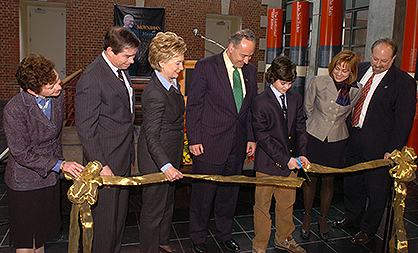
In 1924, Maxwell’s citizenship programs were centered in a new political science department — logical, given the relevancy of government and politics. But the citizenship program was designed, from the beginning, to extend beyond the traditional boundaries of political science.
“Inasmuch as political life grows out of and partakes both of social and individual life,” noted a 1924–25 Syracuse University Bulletin, “it is evident that a satisfactory curriculum will include not only provision for an understanding of political duties, but also of those of a social, economic, and personal character. Moreover the findings of history, literature, philosophy, law, ethics, psychology, and biology must be increasingly incorporated into a well-rounded program of training, particularly for those students who have capacity for, and aspirations toward political leadership.”
One sign of the interdisciplinary character of the School was the creation, right at the founding, of a chair of social psychology. In the words of the SU Bulletin, having a psychologist on the School’s faculty was “in line with the increasing emphasis laid on human nature as being at the very basis of political activity and life.”
Another notable experiment in interdisciplinarity came in 1935, with the introduction of the Social Studies Program in Teacher Education — a collaboration between Maxwell and SU’s School of Education. Directed by Roy Price, SU’s first professor with a dual appointment, the program aimed to improve citizenship teaching in public schools and later introduced a doctorate for those who wanted to teach at the college level.
In the early years, representatives from various social science departments taught a curriculum that grew to encompass history, economics, and sociology. Then, shortly after the opening of Maxwell Hall in 1937, all social science faculty formally became members of the Maxwell School — physically integrating these disciplines with the original vision of the School. Maxwell was renamed the Maxwell Graduate School of Citizenship and Public Affairs, to emphasize its growing professional programs.
By the early 1940s, the basic structure of the School as it exists today — graduate programs in public affairs and undergraduate/graduate programs in the social sciences — was in place. And interdepartmental programs were proliferating. By the School’s 25th anniversary, in 1949, they included American studies, international relations, Latin American studies, Russian studies, social studies education, public administration (not yet its own department), and, of course, citizenship.
Maxwell’s mix of scholars and practitioners created ideal conditions for interdisciplinary research. Over time, research centers and institutes began to emerge to facilitate this kind of cross-departmental collaboration. A pioneer was the Metropolitan Studies Program, founded in 1961 with future Maxwell dean Alan Campbell as its first director. The program was deeply engaged in contemporary issues in economic and social policy. As a Maxwell news report noted in 1978, “A day’s work for the staff of the Metropolitan Studies Program might include testifying before a Congressional committee, advising Governor Carey on the fiscal outlook for New York State, or . . . conversing with the nation’s mayors on the problems of declining central cities.”
Metropolitan Studies eventually partnered with aging studies to become the Center for Policy Research — now one of ten research centers and institutes sponsored or co-sponsored by Maxwell, with specialties that range from environmental policy to conflict resolution, global affairs, counterterrorism, public health, and technology policy.
While the organizational chart of the Maxwell School today is considerably more complex than it was 90 years ago, the original idea — to engage with contemporary issues by drawing from all the social sciences — is still visible. The founders saw what was coming. “As time goes on,” noted the 1924–25 SU Bulletin, “it is anticipated that the various fields of knowledge just listed will be increasingly integrated with the work offered by the School.”
Lesson #3: The Focus Is Ever More Global
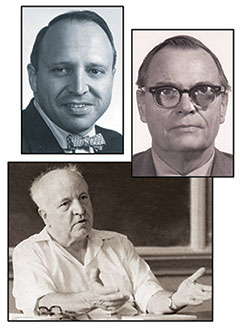
Maxwell was created with a domestic focus. Its core purpose was to produce knowledgeable and engaged American citizens. But over the decades the School’s scope has grown to include any number of international topics and activities — perhaps the greatest change in Maxwell’s character over 90 years. Here are a few milestones in the “globalization” of Maxwell:
1935 Russian studies takes root with a course on Russian geography, soon joined by Russian language and history.
1941 Latin American area studies is introduced as an undergrad major, with courses in the social sciences, fine arts, language, and literature.
1943 The U.S. Army asks Maxwell to run a Russian language and area-studies training program, which inspires the School also to create the nation’s first Russian studies degree for civilians.
1949 Latin American studies adds a master’s program emphasizing student/faculty research, initially focused on Costa Rica.
1952 Dean Paul Appleby spends the first of several extended periods in India, preparing a report on civil service that is used ultimately as the basis for the new Indian Institute of Public Administration.
1956 Dean Harlan Cleveland and political scientist Gerard Mangone begin a study of public service overseas that leads the School to introduce a foreign-residency requirement for students planning to work internationally.
1959 Maxwell professor John Clarke Adams is the founding director of SU’s first study-abroad program, in Florence.
1963 After spending several years in Uganda, political scientist Fred Burke leads the creation of the Program of East African Studies, with an advanced-studies concentration, field seminars in East Africa, Peace Corps instruction, and training of visiting administrators.
1968 The Delhi-born South Asia historian Robert Crane becomes director of Maxwell’s new South Asia program.
1975 The new Foreign and Comparative Studies Program dovetails existing programs in East African, Latin American, South Asian, and Soviet and East European studies.
1985 SU and Cornell University establish a South Asia consortium that becomes a National Resource Center for foreign language, area, and international studies.
1986 The Program on the Analysis and Resolution of Conflicts is born, and becomes well known for its breakthrough work on conflicts in the international arena.
1993 Maxwell begins working with the Chinese government and academies to promote government reform, professionalize the civil service, and create public administration education programs in China.
1994 The Global Affairs Institute is established in the just-opened Eggers Hall, providing a home base for booming international programs.
2003 The new Middle Eastern Studies Program introduces a minor (and eventually major and graduate certificate) in Middle Eastern studies.
2004 Supported by a $10 million grant from Congress, Maxwell establishes the Moynihan Institute of Global Affairs, in honor of the former senator and Maxwell professor Daniel Patrick Moynihan.
2004 Maxwell and SU’s College of Law become co-sponsors of the Institute for National Security and Counterterrorism.
2007 Maxwell works with the Indian Institute of Management Bangalore and Indian government to create a midcareer training program for senior Indian administrators.
2014 Maxwell moves its Washington operations to the Center for Strategic and International Studies and begins to explore collaborative activities.
Today, even a cursory review of faculty research topics reveals how broad Maxwell’s international range has grown. Climate-change politics in South Asia, water and mining in the Bolivian Andes, Islam and international humanitarian law, anti-gentrification
movements in Rio de Janeiro, Sub-Saharan Africa’s exceptionalism, indigenous autonomy in southern Mexico, transnational NGO leadership, pollution content of Chinese exports — the list goes on and on.
By Jeffrey Pepper Rodgers
This article appeared in the summer 2014 print edition of Maxwell Perspective; © 2014 Maxwell School of Syracuse University.
Related News
School News
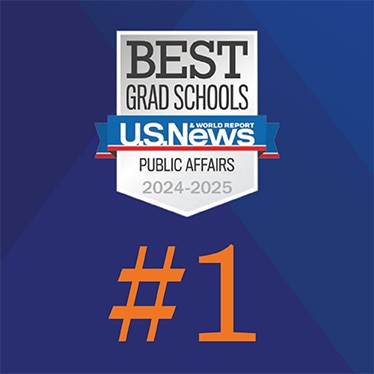
Apr 9, 2024
School News
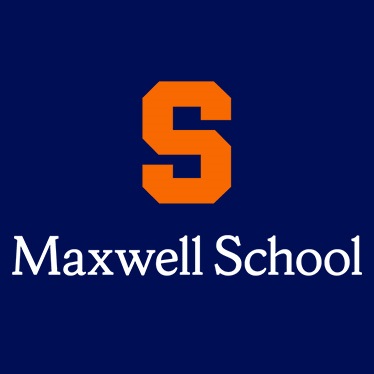
Apr 2, 2024
School News

Mar 29, 2024
School News
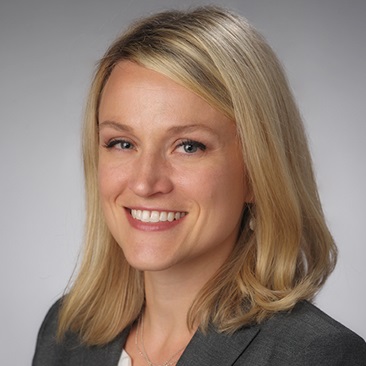
Mar 7, 2024
